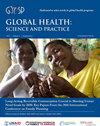在家庭分娩仍是常态的地方改善产妇护理:在危地马拉建立包含传统助产士的当地分娩中心。
IF 2.5
3区 医学
Q2 PUBLIC, ENVIRONMENTAL & OCCUPATIONAL HEALTH
引用次数: 0
摘要
危地马拉半数以上的土著妇女仍在家中由未经正规培训的助产士接生。我们介绍了在危地马拉西部高原农村地区将 comadronas(传统助产士)纳入 casas maternas(分娩中心)的情况。尽管最初有人抵制这种分娩中心,但助产士和客户对其越来越热衷。分娩中心为产妇提供了一个机会,让她们能够在一个类似家庭的环境中,在大家庭的支持下,延续祈祷、按摩等文化传统,尊重分娩过程中重要的精神层面,同时提供更安全的分娩体验,并由分娩中心训练有素的人员发现并发症,在当地进行处理,或及时转诊到更高级别的医疗机构。本文介绍了产妇之家利用率不断提高的最新情况,并对作为分娩团队成员和产妇之家热心推广者的 Comadronas 的作用提出了新的见解,认为产妇之家是家庭分娩的首选。截至 2023 年底,这些母婴之家共照顾了 4322 名产妇。危地马拉卫生部最近采用了这一方法,并开始在其他仍以在家分娩为主的农村地区实施。这种方法值得考虑,因为它是在全世界家庭分娩仍然普遍的地区降低孕产妇死亡率的一种可行的办法,同时还能为妇女提供受尊重的、文化上适宜的护理。本文章由计算机程序翻译,如有差异,请以英文原文为准。
Improving Maternity Care Where Home Births Are Still the Norm: Establishing Local Birthing Centers in Guatemala That Incorporate Traditional Midwives.
More than half of births among Indigenous women in Guatemala are still being attended at home by providers with no formal training. We describe the incorporation of comadronas (traditional midwives) into casas maternas (birthing centers) in the rural highlands of western Guatemala. Although there was initial resistance to the casa, comadronas and clients have become increasingly enthusiastic about them. The casas provide the opportunity for comadronas to continue the cultural traditions of prayers, massages, and other practices that honor the vital spiritual dimension of childbirth close to home in a home-like environment with extended family support while at the same time providing a safer childbirth experience in which complications can be detected by trained personnel at the casa, managed locally, or promptly referred to a higher-level facility. Given the growing acceptance of this innovation in an environment in which geographical, financial, and cultural barriers to deliveries at higher-level facilities lead most women to deliver at home, casas maternas represent a feasible option for reducing the high level of maternal mortality in Guatemala.This article provides an update on the growing utilization of casas and provides new insights into the role of comadronas as birthing team members and enthusiastic promotors of casas maternas as a preferable alternative to home births. Through the end of 2023, these casas maternas had cared for 4,322 women giving birth. No maternal deaths occurred at a casa, but 4 died after referral.The Ministry of Health of Guatemala has recently adopted this approach and has begun to implement it in other rural areas where home births still predominate. This approach deserves consideration as a viable and feasible option for reducing maternal mortality throughout the world where home births are still common, while at the same time providing women with respectful and culturally appropriate care.
求助全文
通过发布文献求助,成功后即可免费获取论文全文。
去求助
来源期刊

Global Health: Science and Practice
Medicine-Health Policy
CiteScore
3.50
自引率
7.50%
发文量
178
审稿时长
22 weeks
期刊介绍:
Global Health: Science and Practice (GHSP) is a no-fee, open-access, peer-reviewed, online journal aimed to improve health practice, especially in low- and middle-income countries. Our goal is to reach those who design, implement, manage, evaluate, and otherwise support health programs. We are especially interested in advancing knowledge on practical program implementation issues, with information on what programs entail and how they are implemented. GHSP is currently indexed in PubMed, PubMed Central, POPLINE, EBSCO, SCOPUS,. the Web of Science Emerging Sources Citation Index, and the USAID Development Experience Clearinghouse (DEC).
TOPICS:
Issued four times a year, GHSP will include articles on all global health topics, covering diverse programming models and a wide range of cross-cutting issues that impact and support health systems. Examples include but are not limited to:
Health:
Addiction and harm reduction,
Child Health,
Communicable and Emerging Diseases,
Disaster Preparedness and Response,
Environmental Health,
Family Planning/Reproductive Health,
HIV/AIDS,
Malaria,
Maternal Health,
Neglected Tropical Diseases,
Non-Communicable Diseases/Injuries,
Nutrition,
Tuberculosis,
Water and Sanitation.
Cross-Cutting Issues:
Epidemiology,
Gender,
Health Communication/Healthy Behavior,
Health Policy and Advocacy,
Health Systems,
Human Resources/Training,
Knowledge Management,
Logistics and Supply Chain Management,
Management and Governance,
mHealth/eHealth/digital health,
Monitoring and Evaluation,
Scale Up,
Youth.
 求助内容:
求助内容: 应助结果提醒方式:
应助结果提醒方式:


